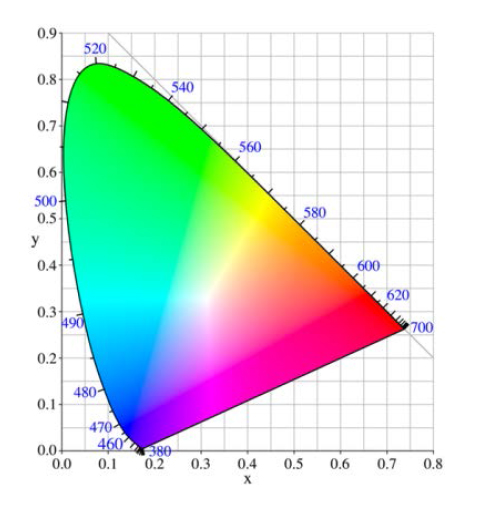
On September 30th 2014, “ENERGY STAR Program Requirements Product Specification for Lamps (Light Bulbs)” will replace the “Integral LED Lamps Version 1.4”. To complete the analysis we started last time, we should look at dimming requirements in the new document, described in section 12, pages 19 and 20. Anyone familiar with designing dimmable LED bulbs and drivers is aware of the challenges that result from the availability of huge volumes of dimmers with very different performance in the market, and the significant trade-offs necessary to ensure the most widespread compatibility with all the different types of TRIAC dimmers. However, ENERGY STAR has limited the compatibility requirements to only five different dimmers from at least two manufacturers.
The new document recommends that different dimmer technologies (leading-edge/trailing edge or non-phase-cut types) be included in the test – but does not require it. Vendors will seek to make their offerings more attractive by increasing the scope of this test and adding additional compatible dimmer types on their websites or in the fine print on the bulb packaging.
So what does the dimmer compatibility test call for?
- Dimming Performance (12)
- Maximum Light Output (12.1)
- Minimum Light Output (12.2)
- Flicker (12.3)
- Audible Noise (12.4)
ENERGY STAR does not mandate dimmability for all bulb designs, only those bulbs intended and marked for dimming applications.
Maximum light output requires that light output must be >80 percent of non-dimmer-connected level when connected to a dimmer. Many phase-cut dimmers, even at their maximum brightness setting, still limit the conduction angle to 160° or less, so this test ensures that the bulb will typically not be significantly less bright until the user begins to operate the dimmer switch.
Minimum light output describes how low the lamp brightness can be and sets a default requirement of greater than 5:1 dimming ratio (the manufacturer can publish a different number if they choose). Given that the minimum conduction angle of some dimmers can be in the range of 40°, turning the lamp off completely during dimming is often a challenge and the requirements of this test recognize that. An audible noise test is also required at minimum light output.
Flicker. The light needs to be on or the light needs to be off, any toggling between these two states creates the problem of flicker (variations in brightness rather than distinct on-off is typically termed “shimmer”). ENERGY STAR does not describe flicker as a pass-fail, rather it seeks to describe the amount of variation in light output that occurs (effectively shimmer and flicker). The measurement is flicker index, defined as the ratio of the light output curve above the average to the area below the average.
It should be noted that this is very different from the oft used term Percentage flicker (which is not used for ENERGY STAR)
Flicker index takes into account Duty-Cycle and wave shape. Because it is an area calculation rather than a peak-to-peak calculation, comparing flicker index and percentage flicker is a non-trivial exercise, even with the mostly sinusoidal waveforms exhibited by the majority of single-stage LED driver bulbs on the market today.
Audible noise is a consistent concern with LED drivers – especially when a step voltage is applied to the input of the driver by a phase-cut dimmer (worst at 90° conduction angle). ENERGY STAR calls for an audible noise measurement of less than 24 dBA at 1 meter from the lamp (or lamps – up to four must be tested together). Magnetostriction in the input filter- differential EMI inductors and ceramic input capacitors, can be a significant cause of audible noise. The problem is often exacerbated by the use of flexible packaging materials or insulating wraps that can act as sounding boards in a confined bulb design, greatly amplifying audible noise. Consumers are typically very sensitive to any kind of buzzing from LED lamps and the low amplitude of acceptable audible noise called for by ENERGY STAR (24 dBA is pretty much imperceptible to the average human ear) reflects this.
In conclusion, ENERGY STAR goes a long way towards promoting good practice in bulb design in a lot of areas, some of which are not immediately obvious to the end-user.
It is worth noting that since I wrote the first part of this piece, there have been moves in the US Congress to remove funding from the program of EPA enforcement of lamp efficiency standards – the de-facto incandescent bulb ban, which is, in itself, the major driver behind the increasing market penetration of LED lighting. (http://feedly.com/e/EaLR7FDK).
Meanwhile in California…..
The California Energy Commission launched Title 20 and Title 24, state guidelines for LED bulbs and fixtures, on November 1st 2013. Like ENERGY STAR, this document is not a standard and is not technically mandatory, but to be eligible for the LED lighting subsidies offered by the California power utilities, a bulb or fixture has to meet the requirement. At the time of writing, Cree are the beneficiaries of a hefty $10.00 in-store rebate (dropping the price of their high CRI 60 W bulb to just less than $10) courtesy of PG&E. This is a game-changing 50 percent ASP reduction so the pressure will be on for all North American LED bulb makers to meet the requirements of Title 20. So how does it stack-up against ENERGY STAR in terms of requirements?. We will look to explore these requirements and discuss their implications for lighting designers for the whole North American market next time.



